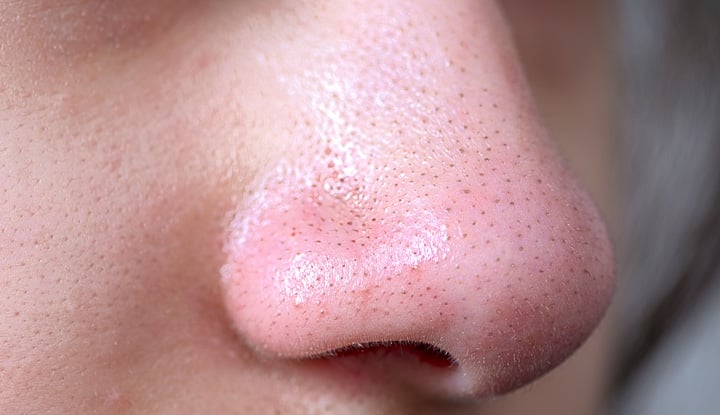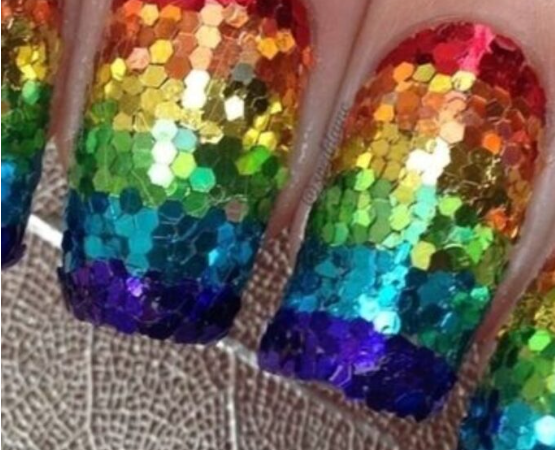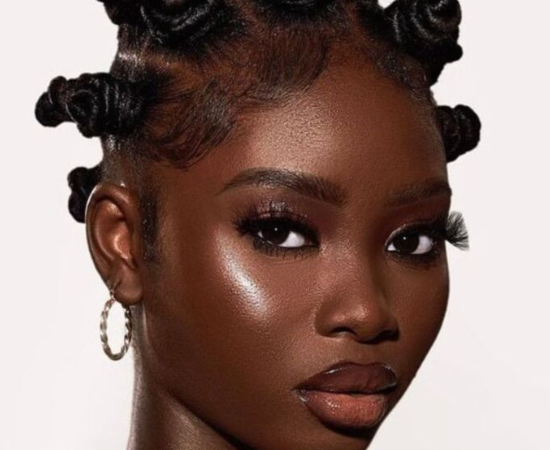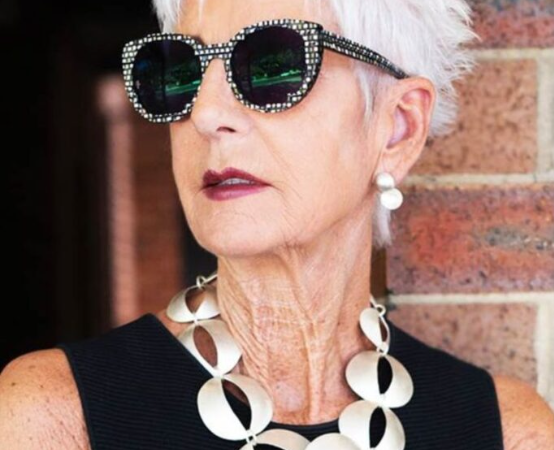The Art and Science of Daith Piercing: A Comprehensive Guide
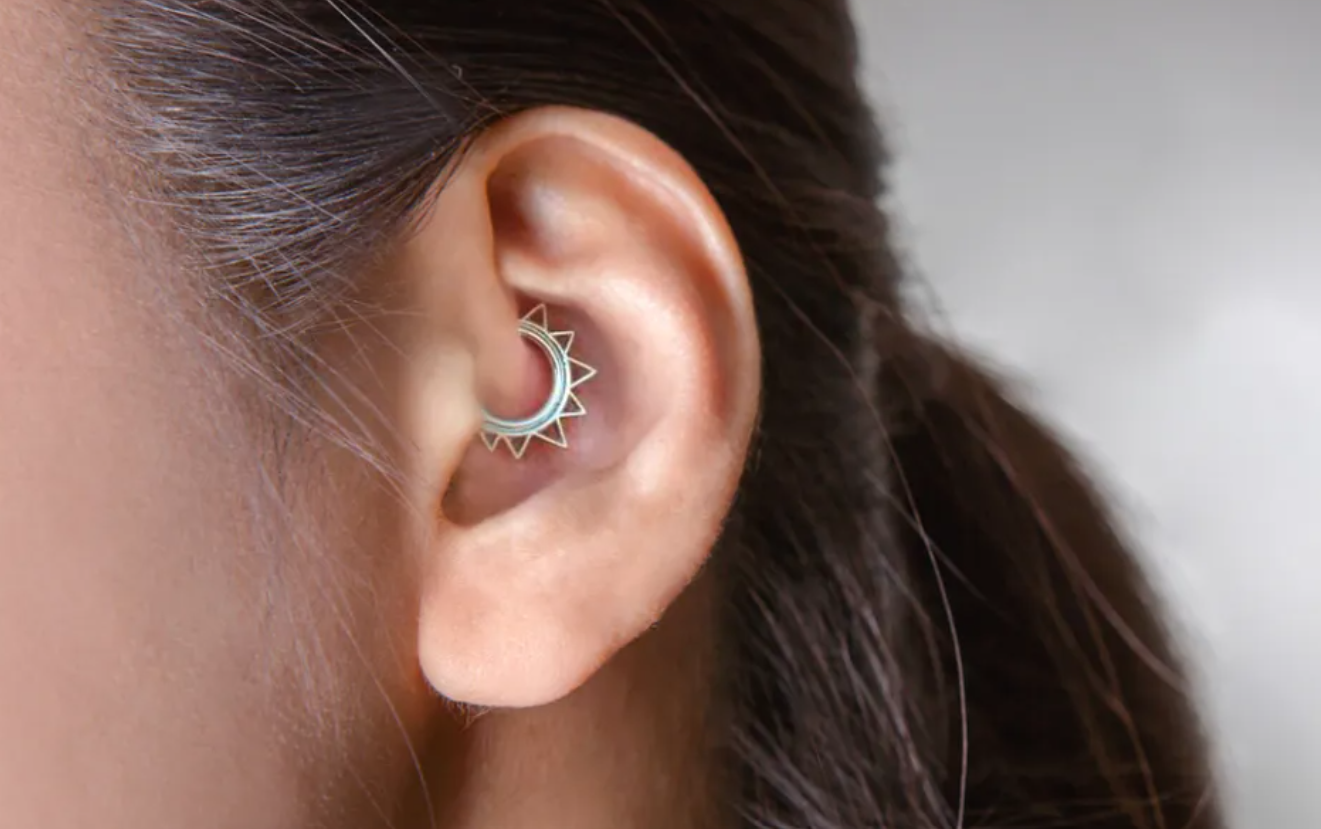
Daith Piercing – In recent years, body piercing has transcended its countercultural roots to become a mainstream form of self-expression and adornment. One particular piercing that has gained immense popularity is the daith piercing. Nestled deep within the ear’s inner cartilage, the daith piercing is aesthetically striking and associated with potential therapeutic benefits.
In this comprehensive guide, we will delve into daith piercing, exploring its history, the procedure itself, aftercare, potential health benefits, and associated risks.
History of Daith Piercing
The daith piercing has its roots in the body modification subculture. Still, it has gained widespread recognition in recent years, thanks to social media and celebrities embracing this unique piercing style. While the exact origin of the daith piercing remains somewhat unclear, it’s believed to have emerged in the early 1990s, primarily within the body piercing community.
The term “daith” is derived from the Hebrew word for “knowledge” and is often associated with wisdom and spiritual enlightenment. This connection with wisdom has contributed to the piercing’s allure, symbolising self-awareness and personal growth for many individuals.
The Procedure
The daith piercing is performed by a trained and experienced body piercer. Here’s a step-by-step breakdown of the procedure:
- Preparation: Before any piercing, the piercer will sterilize the equipment, including needles, jewellery, and gloves, to minimize the risk of infection. They will also clean the area to be pierced, usually the innermost fold of the ear.
- Marking: The piercer will use a pen or marker to mark the precise location for the Daith piercing. This step ensures that the piercing is centred and aligns with the client’s preferences.
- Piercing: Using a sterilized, hollow needle, the piercer will create an opening through the daith’s cartilage. The jewellery, typically a small captive bead ring or curved barbell, is inserted through the opening.
- Finishing touches: The piercer will secure the jewellery, clean the area again, and provide aftercare instructions to the client.
Daith Piercing Aftercare
Proper aftercare is crucial to minimize the risk of infection and ensure a smooth healing process. Here are some essential aftercare tips for daith piercing:
- Cleanliness: Clean the piercing area daily with a saline solution or sterile saline wound wash. Avoid using alcohol or hydrogen peroxide, as they can be too harsh and may slow down the healing process.
- Avoid touching: Resist the urge to touch or twist the jewellery, as this can introduce bacteria and hinder healing.
- Avoid submersion: Keep the piercing dry during the initial healing period to prevent infection. Avoid swimming pools, hot tubs, and excessive moisture.
- Haircare: Be cautious when combing or brushing your hair to avoid snagging the jewellery.
- Avoid sleeping on it: Try to sleep on the opposite side or use a travel pillow to reduce pressure on the piercing.
- Monitor for signs of infection: Look for redness, swelling, excessive pain, or discharge. If you suspect an infection, consult your piercer or a healthcare professional promptly.
Potential Health Benefits
One intriguing aspect of daith piercings is their association with potential therapeutic benefits, particularly for migraines. While scientific evidence is limited, some individuals claim that daith piercings have reduced the frequency and intensity of their migraines. It is theorized that the piercing may target specific pressure points and promote energy flow in the body, similar to acupuncture.
It’s essential to note that the efficacy of daith piercings for migraine relief remains anecdotal, and individuals seeking this potential benefit should consult with a medical professional first.
Risks and Considerations
As with any body modification, daith piercing carries inherent risks. These risks include:
- Infection: Piercing can introduce bacteria, leading to localized infection if proper aftercare is not followed.
- Pain and Discomfort: Piercing the cartilage can be more painful than other types of piercings, and some people may experience discomfort during the healing process.
- Migration or Rejection: Sometimes, the body may reject the jewellery, causing it to migrate or be pushed out.
- Keloids and Scarring: Scarring can occur, especially if the piercing is not cared for properly.
- Hearing Impairment: While rare, there have been reports of hearing issues related to daith piercings if the jewellery interferes with the ear canal.
How to change a daith piercing?
Changing a daith piercing, like any other type of body jewellery, should be done carefully and with clean hands to minimize the risk of infection or injury. Here’s a step-by-step guide on how to change a Daith piercing:
Before you begin:
- Gather your supplies: You will need a new piece of daith jewellery (e.g., a captive bead ring or curved barbell), clean disposable gloves, and a mirror.
- Wash your hands: Thoroughly wash them with soap and warm water for at least 20 seconds to ensure they are clean.
The process:
- Prepare the area: Sit in a well-lit area with a mirror nearby. Ensure you have a clean surface to work on.
- Put on disposable gloves: Wearing clean disposable gloves will help prevent transferring any bacteria from your hands to the piercing.
- Inspect the jewellery: Examine the new jewellery to ensure it’s clean, in good condition, and the correct size for your daith piercing.
- Soften crusties: If there are any crusties (dried lymph or debris) around the piercing, gently soften them with a saline solution. Use a cotton swab to apply the solution to the piercing, allowing it to soak for a minute or two.
- Loosen the current jewellery: Gently wiggle the current jewellery back and forth, if necessary, to break any adhesions or crusties. Be patient and gentle to avoid causing unnecessary trauma to the piercing.
- Remove the old jewellery: Once the jewellery is loosened, use your fingers or clean, sterilized jewellery pliers (if available) to carefully remove the old jewellery from the Daith piercing.
- Insert the new jewellery: Holding the new jewellery with one hand and using your other hand to guide it, carefully insert the jewellery into the piercing hole. Make sure it goes through smoothly without forcing it.
- Secure the jewelry: Secure it in place depending on the type of jewellery you’re using. For captive bead rings, use clean, sterilized ring-opening or ring-closing pliers to gently close the ring, ensuring the bead is snugly in place. For curved barbells, screw on the ball or close tightly.
- Clean the area: After changing the jewellery, clean the area around the daith piercing with saline solution to remove any residue or debris.
- Dispose of gloves: Carefully remove and dispose of the disposable gloves. Wash your hands thoroughly once more.
- Monitor the piercing: Over the next few days, keep an eye on the piercing for any signs of infection, irritation, or unusual discharge. Continue with your regular aftercare routine to help the piercing heal properly.
Remember, if you encounter any difficulties or experience pain, discomfort, or signs of infection during the jewellery change process, it’s crucial to seek professional assistance from a reputable piercer or a healthcare provider. They can provide guidance and ensure the safety of your daith piercing.
Types of jewellery used for daith piercing
Daith piercings can be adorned with various types of jewellery to suit your style and preferences. The choice of jewellery largely depends on your taste and how you want to showcase your daith piercing. Here are some common types of jewellery used for daith piercings:
- Captive Bead Ring (CBR): This is one of the most popular choices for daith piercings. A CBR consists of a ring with a small bead or captive ball that can be removed and reinserted, making it relatively easy to change the jewellery. The bead is held in place by the tension of the ring.
- Circular Barbell: Similar to a CBR, a circular barbell is a ring that forms a complete circle, but instead of a removable bead, it has threaded ends that can be unscrewed to insert or remove the jewellery. Circular barbells come in various sizes and materials.
- Curved Barbell: Curved barbells are also popular choices for daith piercings. These have a curved shape, with threaded balls on each end. The curvature of the barbell follows the contour of the daith, creating a sleek and stylish look.
- Hinged Segment Ring: This type of jewellery has a small hinge that allows you to open and close the ring without needing threaded ends or beads. Hinged segment rings are easy to use and come in various materials and designs.
- Clicker Ring: Clicker rings are hinged rings that have a distinct “click” mechanism, making them easy to open and close securely. They often feature intricate designs or gemstones for added style.
- Seamless Ring: Seamless rings have no visible opening or seam, creating a sleek and continuous look. These rings are usually opened and closed with special tools by a professional piercer.
- Barbell with Decorative Ends: Some people opt for barbells with decorative ends, such as gemstone-studded balls or unique shapes. These can add a touch of elegance or personal flair to your daith piercing.
- Threadless Jewelry: Threadless jewellery utilizes a press-fit system, where the decorative end of the jewellery is inserted into the barbell post, creating a secure fit without external threading. This type of jewellery is easy to change and offers various design options.
- Ear Hoops: Small ear hoops or continuous rings can also be used for daith piercings, providing a minimalist and seamless look.
- Custom Jewelry: If you want something unique, consider custom-made daith jewellery. Professional piercers and jewellery artisans can create custom pieces to suit your style and preferences.
When choosing jewellery for your daith piercing, it’s essential to consider factors such as material (e.g., surgical steel, titanium, niobium, gold), size, design, and comfort. Additionally, make sure the jewellery is hypoallergenic and suitable for initial piercings if you’re changing the jewellery shortly after getting the daith piercing. Always consult with a professional piercer for advice on jewellery selection and changing to ensure the safety and health of your piercing.
Cost of Daith Piercing
The cost of a Daith piercing can vary widely depending on several factors, including your location, the piercing studio’s reputation, the experience of the piercer, and the type of jewellery you choose. On average, you can expect to pay anywhere from $30 to $100 or more for a daith piercing.
Here are some factors that can influence the cost of a Daith piercing:
- Location: Piercing prices can vary significantly from one region to another. Piercing studios in major cities and urban areas may charge more than in smaller towns or rural areas.
- Piercing Studio Reputation: Well-established and reputable piercing studios with experienced piercers may charge higher fees.
- Piercer’s Experience: Experienced piercers with a track record of safe and successful piercings may charge more than less experienced piercers.
- Jewelry Choice: The cost of the jewellery itself can vary widely depending on the material and design. High-quality surgical steel, titanium, or gold jewellery may cost more than standard options.
- Piercing Package: Some studios offer piercing packages that include the cost of the jewellery, aftercare products, and follow-up appointments. These packages may be more expensive but can provide added convenience.
- Additional Services: If you opt for additional services such as numbing creams, it may increase the overall cost.
It’s essential to research piercing studios in your area, read reviews, and ask for recommendations to find a reputable and experienced piercer. While cost is a consideration, prioritize safety and professionalism when choosing a studio for your daith piercing.
Remember that the initial piercing cost is only part of the overall expense. You’ll also need to budget for aftercare products, including saline solution, to heal your daith piercing properly.
Conclusion
Daith piercing is more than just a fashion statement; it’s a form of self-expression and, for some, a potential source of relief from migraines. However, it’s essential to approach daith piercing carefully and ensure that you choose a reputable piercer and follow proper aftercare guidelines to minimize potential risks. Whether you’re drawn to the spiritual symbolism, the aesthetics, or the potential health benefits, daith piercing has undeniably left its mark on the world of body modification and self-expression.
